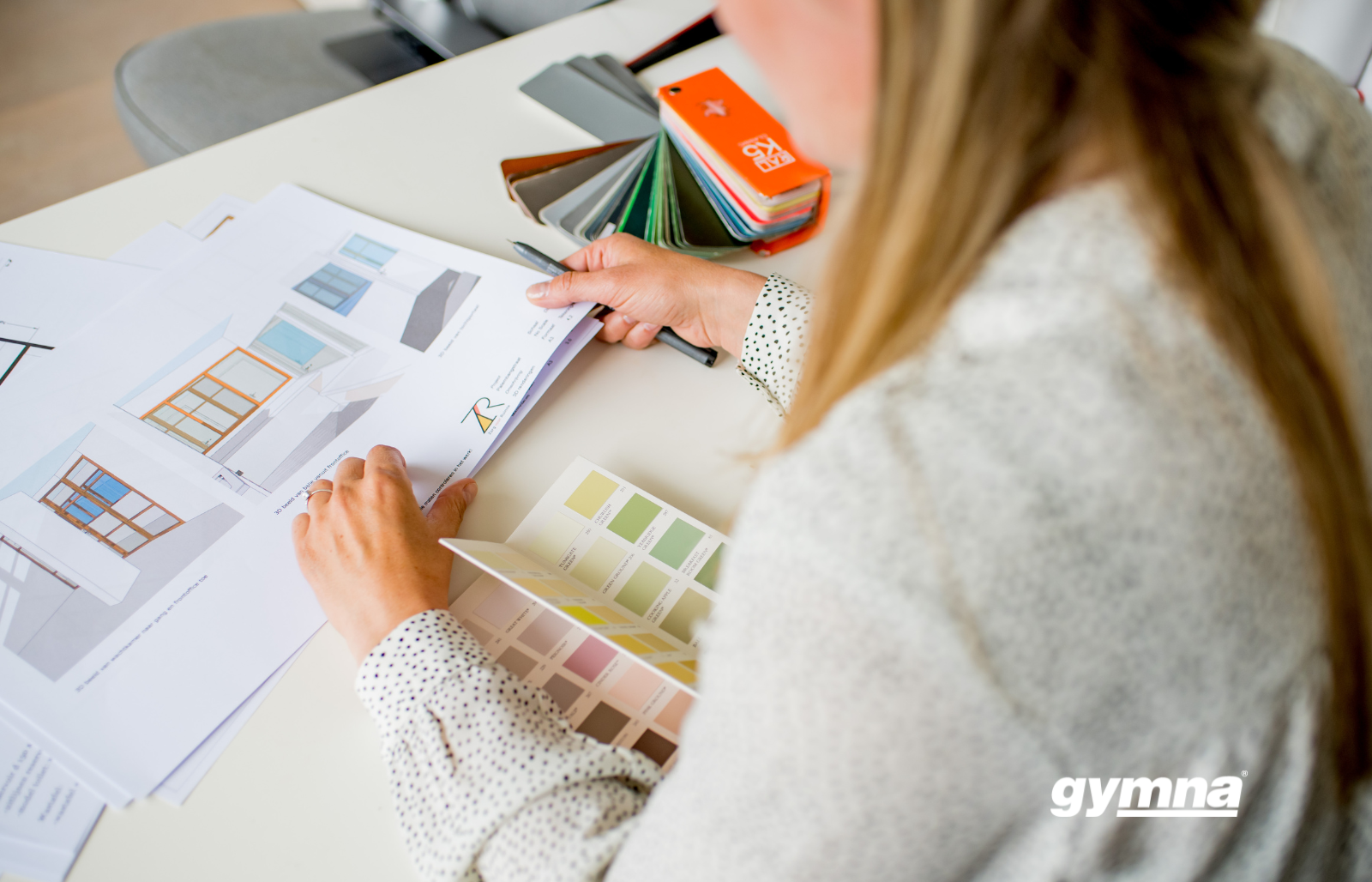Common pitfalls in practice design and how to avoid them
Smart choices that make your practice instantly better

In the blog 'How your practice’s interior design contributes to your success', Laura Rijkhold Meesters shared how setting the right atmosphere and choosing a thoughtful interior design can make quite the difference in healthcare practices. In this follow-up, she shares even more smart choices to make your practice stand out. From common pitfalls in today’s healthcare practices to giving your space that extra touch without any major (and expensive) renovations. As a healthcare professional and interior designer specializing in primary healthcare, Laura provides clear insights and five practical tips you can apply immediately.

Laura Rijkhold Meesters, interior designer specializing in primary healthcare
Laura worked as a general interior designer for nine years, but the big projects she worked on during her time as a general interior designer lacked passion and inspiration. Having always been interested in healthcare, Laura enrolled in a dual HBO-V course. She was immediately convinced of the power of working in healthcare, but while working in a hospital ran into all sorts of things. Laura recounts:
"Sometimes I would be literally running into things, leaving me covered in bruises. But also figuratively, for instance due to lack of storage space for rollators or an illogical placement of the notice board at the headboard of a patient’s bed. All of these things can be easily improved, I thought."
Her out-of-the-box thinking, however, did not fit into a traditional protocol-based hospital. Which is why Laura switched career paths once more and now enjoys assisting professionals in primary healthcare with interior design.
Opportunities to improve your practice design
As a physiotherapist, you are first and foremost a healthcare provider and perhaps even quite the entrepreneur, but interior design might not be your cup of tea. It is therefore not surprising to come to the conclusion that your practice interior might not be entirely optimal. Fortunately, there are always plenty of opportunities to create a more serene atmosphere, to improve your overview and even your comfort, just by making better and smarter choices. Laura Rijkhold Meesters is more than happy to share seven easy fixes to improve your practice.
Seven focal points for improving the atmosphere, serenity and comfort in your practice space:
1. Go for good acoustics
"Good acoustics give a sense of security and privacy. But if you can hear what’s being said or done in the adjacent rooms, in the exercise room or in the waiting room while you’re treating a patient in your treatment room, everything you’re doing might be counterproductive."
2. Boost your vision in your waiting room
"Even your waiting room should carry out the vision you have of yourself as a physiotherapist. It is crucial that your patient is able to recognise themselves in your vision (and yes, that even applies to your waiting room) so that they feel comfortable throughout their visit. That is why a practice for elite and professional athletes, for example, will look totally different than a practice catering to a predominantly geriatric target group. Interior-wise, a practice for elite and professional athletes might look a bit younger, fresher and more dynamic. It is so important that the interior of your practice is able to deliver on what your practice seems to promise. That is precisely why it’s difficult claiming to work with the best therapists there are in a practice that’s looking a bit worse for wear."
3. Make conscious lighting choices
"A good lighting plan not only illuminates your work area, but also adds depth, style and atmosphere to a room (even if it is your treatment room). A spotlight aimed at a wall creates a completely different atmosphere than an LED panel on a ceiling. And don't forget to put yourself in your patient's shoes. A bright spotlight placed right above the treatment table may help you while you’re working, but, unsurprisingly, a patient does not like a spotlight shining straight into their eyes when they’re lying on your treatment table."
4. Aim for sweet serenity in your treatment room
"For your patients, it is important that your treatment room radiates a sense of serenity and calmness. Too many or too bright colours in one room create a sense of agitation, and too much tools and materials lying around have the same effect. Let’s not forget that acoustics come into play here as well. Ensure patients can't hear sounds from the exercise room and certainly can't follow what’s being said in the treatment room next door.
5. Strive for privacy and security
"Your patient has to feel safe and secure in your treatment room. One major factor to create that sense of privacy is preventing patients from overhearing other people's conversations. And, when it comes to the aspect of security, with a curtain or simple lock you can easily ensure that no one can just drop in when your patient is undressed. Quick and easy fixes with a major impact."
6. Choose comfort instead of practical when it comes to sitting
"Sitting in a chair makes a patient feel more relaxed during an anamnesis or lengthy evaluation. Unlike your treatment table, which actually forces your patient into active sitting, a simple chair supports the patient’s sitting posture. Discussing the progress of a patient’s treatment together at a table creates a sense of equality and makes your patient feel more confident and at ease."
7. Don’t lose sight of the condition of your treatment table
"Treatment tables are expensive, so buying a new one is often put on the back burner for as long as possible. Nevertheless, bear in mind that a run-down, creaky treatment table can drastically diminish your patient's confidence, their sense of security, relaxation and maybe even their image of you as a professional healthcare provider."
While reading along, Laura's many insightful tips and tricks might have given you some much needed inspiration to improve your practice space and lift it to the next level. Sometimes, however, not all pitfalls are that obvious, which is why Laura has five more tips for you.
Learn more about treatment tables
Five practical tips to immediately improve your practice design.
When you hear the terms practice design or interior design, the first things that come into mind are probably complicated concepts, lots of extra work and high costs. But that's not necessarily the case. With Laura’s 5 tips you now have some major quick wins at your fingertips to easily, inexpensively and immediately -or almost immediately- transform your practice space.
Tip 1:
Come up with a clear and outlined vision. Visualise what it is precisely that you want your practice space to project. When making decisions related to the design, the lay out and look and feel of your practice, ensure they fit seamlessly into your vision of your practice space. And finally, always assess whether both you and your patients will benefit from the alterations you have in mind.
Tip 2:
Put yourself in your patients’ shoes (figuratively of course). Step into your waiting room and ask yourself where you would sit and why. Think of what you would do when there’s no one greeting you at the reception Then repeat these steps while sitting in a wheelchair, walking with a cane or even crawling on hands and knees like a child. You’d be surprised at what you will notice with this literal change of perspective.
Tip 3:
Say goodbye to scratches on the walls, dirt and grime. Give your practice a fresh coat of paint to bolden your new vision.
Tip 4:
Take a good look at your wall decorations. Ask yourself if that particular painting, photo or illustration needs to hang there. Be aware of the fact that many of your patients might not be as comfortable as you are, staring at those typical anatomy posters that are so abundant in practices. If you’re really convinced of the art or décor you’ve chosen for your practice, go the extra mile and have it printed on acoustic material. That’s another quick win to immediately improve the acoustics within your practice.
Tip 5:
Don’t hesitate to ask your patients what they think of your décor and adjust the furnishings accordingly. For example, that omnipresent yellow needle container on your counter might be perceived by your patients as a rather unpleasant reminder of what they will be subjected to during your treatment.

The effect of smart practice design: a case study
A smartly designed practice space carries your look and vision in its essence. Such an approach leads to better assessments, reduced aggressive outbursts of patients and a higher compliance rate. Below Laura gives a great example of how integrating a minor element in the layout of your practice can have major effects:
"I once visited a physiotherapy practice in Amsterdam that had made a smart interior design choice by integrating a sort of coffee bar within its walls. While said coffee bar consisted of nothing more than a mere shelf on the wall with three bar stools seated next to it, people continuously walked in and out to have a cup of coffee. The fact that people could just stop by for a cup of coffee fostered an incredible sense of community and simultaneously created a wonderful atmosphere. The integration of the coffee bar within its walls drastically lowered the people’s reluctance to booking an appointment at the physiotherapy practice and even promoted their compliance with their respective therapies. The patients generally all shared the idea that while they’re there for that cup of coffee, they could immediately do their exercises in the exercise room. Undoubtedly, this smart set-up meant extra business for the practice, thereby making it more successful."
Why hire an interior designer?
Laura gave us so much information and useful tips that we felt we could immediately start working on a design of our own. Still, it can be useful sometimes to engage with a (specialised) interior designer. Laura has spoken to many practice owners over the years and seen even more practices, so she has a lot of experience in practice design. Laura explains:
"Because of my background, I’m able to put myself in a designer’s shoes as well as those of a healthcare provider and a patient, allowing me to assess my designs from all sides. My experience taught me that many healthcare providers do have certain ideas about which direction they want to go with their practice design but unfortunately miss the time to make it come to life. That’s where I come into play. Compare it to working out at the gym. You can do that without supervision and you will surely improve. But you also have the option to have a physiotherapist oversee your workout and save you from injury. Similarly, I can save practice owners from sub-optimal interior design choices."

Feeling inspired to optimise your own practice space?
Thanks a lot Laura, for the clear information and your practical tips, from reviewing the patient route to acoustic wall coverings and sturdy treatment tables. We now know that a good interior design is clearly worth the investment and pays off in a greater workflow and a drastically improved patient experience.
Perhaps you’ve come to recognise certain elements that you would like to approach differently, or perhaps you’ve discovered new exciting opportunities to make your practice even more pleasant and functional. Did Laura awaken the designer in you and are you curious to know if and how she could help you? Then take a look at her website www.zorgvoorruimte.nl or contact her directly by phone (+31 6 16 50 57 80) or by e-mail (info@zorgvoorruimte.nl ).
Would you like more information about Gymna’s treatment tables and their many possibilities? Then feel free to contact us:
